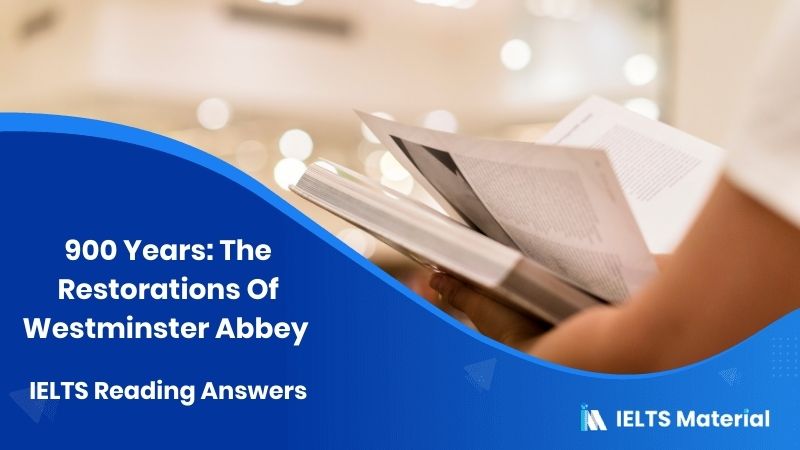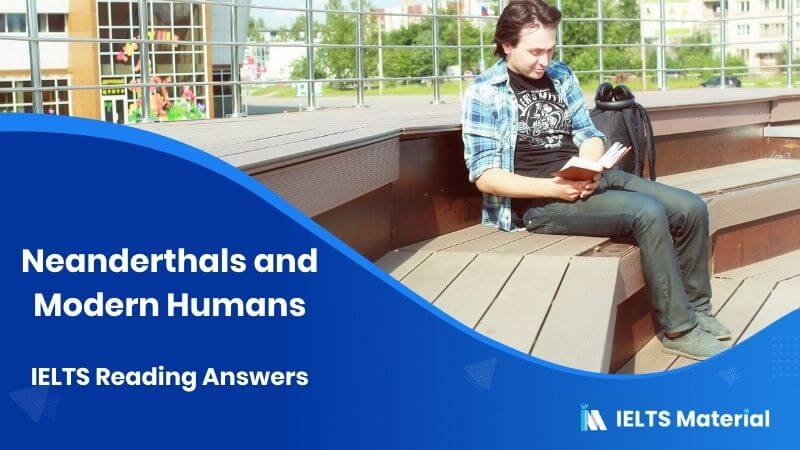The Forgotten Forests- IELTS Reading Answers
Table of Contents

Recent IELTS Reading Test with Answers PDF
In the IELTS Academic Reading practice passage, “The Forgotten Forests”, there are various question types. Each of these question types are asked in the IELTS Reading exam. So, the passage given in this practice test will help you enhance your reading and understanding capabilities. If you are interested in familiarising yourself with all the question types, don’t hesitate to take an IELTS reading practice test.
Here are the types of questions asked in the passage :
- Sentence Completion [Q.1 – Q.5]
- Flowchart [Q.6 – Q.9]
- True/False or Not Given [Q.10 – Q.13]
Ideally, you should not spend more than 20 minutes for the passage “The Forgotten Forests”.
Reading Passage
The Forgotten Forests


Reading Passage Questions
Questions 1-5
Complete the notes below.
Write NO MORE THAN TWO WORDS for each answer.
Write your answers in boxes 1-5 on your answer sheet.
Forest fire ensures that:-
- Birds can locate their 1…………………… in the ground.
- The burrows of a species of 2……………………. provide homes to many other animals.
- Hardwoods such as 3……………………. can grow and outnumber long-leaf trees.
Apart from fires lit by lightning:-
- Fires are created by 4………………………. and settlers.
- Fires deliberately lit are called 5……………………….
Questions 6-9
Complete the flowchart below.
Write ONE WORD ONLY for each answer.
How to increase the number of cockaded woodpeckers
Calcium stored in 6___________
⇓
Shrubs are burned. Calcium released into 7______________ and travels up to the leaves.
⇓
a kind of 8______________eats the leaves
⇓
Red-cockaded woodpeckers eat those a
⇓
The number of 9_____________ increases
⇓
More cockaded woodpeckers
Questions 10-13
Do the following statements agree with the information given in Reading Passage 1?
In boxes 10-13 on your answer sheet, write
TRUE If the statement agrees with the information
FALSE If the statement contradicts the information
NOT GIVEN If the information is not given in the passage
10 The sparse distribution of longleaf pine trees leads to the most diversity of species.
11 It is easier to restore forests converted to farms than forests converted to plantations.
12 The cost to restore forests is increasing recently.
13 Few can live to see the replanted forest reach its maturity.
Grab the opportunity to practice more with the newly launched IELTS Academic Reading Book
Reading Answers
1 Answer: nests
Question type: Note Completion
Answer location: Paragraph 6, line 3
Answer explanation: The 3rd line of paragraph 6 states that It tucks its nest on the ground beneath dumps of wiregrass and little bluestem in the open under-story. These lines deduce that birds tuck their nest on the ground below the dumps of wiregrass and little bluestem in the open understory, that is the birds can locate their nest in the ground. So, the answer is Nest.
2 Answer: Tortoises
Question type: Note Completion
Answer location: Paragraph 6, line 6
Answer explanation: We find a reference for tortoises in the 6th line, where it is mentioned that Gopher tortoises, the only native land tortoises east of the Mississippi, are also abundant in longleaf. A keystone species for these forests, its burrows provide homes and safety to more than 300 species of vertebrates and invertebrates ranging from eastern diamond-back rattlesnakes to gopher frogs. These lines indicate that Tortoises are in large numbers in the longleaf and that their burrows provide a home to many animals. Thus, the answer is Tortoises.
3 Answer: Oaks
Question type: Note Completion
Answer location: Paragraph 7
Answer explanation: The introductory lines of the 7th paragraph illustrates Mitchell saying that without fire, we also lose longleaf. Fire knocks back the oaks and other hardwoods that can grow to overwhelm longleaf forests. We can understand that longleaf will be lost without fire because fire refuses the oaks and hardwoods that grow to bury the longleaf forests. Thus, hardwood such as oaks doesn’t take over. So, the answer is Oaks.
4 Answer: Native Americans
Question type: Note Completion
Answer location: Paragraph 7, line 5
Answer explanation: Mitchel says in the 5th line of paragraph 7 that native Americans also lit fires to keep the forest open, which means that apart from the fires lit by lightning, native Americans lit fires to keep the forests open. Thus, the answer is native Americans.
5 Answer: prescribed burns
Question type: Note Completion
Answer location: Paragraph 9, line 2
Answer explanation: The 2nd line of the 9th paragraph states that most of these fires are prescribed burns, deliberately set with a drip torch. These lines indicate that fires deliberately lit were called prescribed burns. So, the answer is prescribed burns.
6 Answer: shrubs
Question type: Flowchart Completion
Answer location: Paragraph 8, line 10
Answer explanation: In the 10th line of paragraph 8, James says that they learned calcium is stashed away in woody shrubs when the forest is not burned. These lines indicate that calcium is stored (stashed) safely in woody shrubs when the forests are not burnt. So, the answer is shrubs.
7 Answer: soil
Question type: Flowchart Completion
Answer location: Paragraph 8, line 12
Answer explanation: The twelfth line of paragraph 8 states, “But when there is a fire, a pulse of calcium moves down into the soil and up into the longleaf.” These lines suggest that when the forests start burning, a pulse of calcium is released into the soil, traveling upto the leaves. So, the answer is soil.
8 Answer: Ant
Question type: Flowchart Completion
Answer location: Paragraph 8, line 13
Answer explanation: The 13th line of paragraph 8 reveals that eventually, this calcium makes its way up the food chain to a tree-dwelling species of ant, which is the red-cockaded’s favorite food. We can deduce from these lines that after the calcium is released into the soil, it travels up into the longleaf, making its way up the food chain to a tree-dwelling species of ant, the red-cockaded’s favorite food. Thus, the answer is Ant.
9 Answer: eggs
Question type: Flowchart Completion
Answer location: Paragraph 8, last line
Answer explanation: The last line of paragraph 8 reveals the result, more calcium for the birds, which leads to more eggs, younger, and more woodpeckers. These lines indicate that if there is more calcium for the birds, there’ll be an increase in the eggs, leading to more woodpeckers. Thus, the answer is ‘Eggs’.
10 Answer: True
Question type: True/False/ Not Given
Answer location: Paragraph 3
Answer explanation: When we read paragraph 3, we understand that trees grow widely scattered in longleaf pine forests, creating an open, park-like environment, more like a savanna than a forest. The trees are not so dense as to block the sun. This openness creates a forest floor among the most diverse in the world, where plants such as many-flowered grass pinks, trumpet pitcher plants, Venus flytraps, lavender ladies, and pineland big buttons grow. As many as 50 different species of wildflowers, shrubs, grasses, and ferns have been cataloged in just a single square meter. These lines indicate that the scanty distribution of longleaf pine trees in the longleaf pine forests results in the growth of most diversity of species. Thus, the statement agrees with the information, so, the answer is True.
11 Answer: False
Question type: True/False/ Not Given
Answer location: Paragraph 10
Answer explanation: The initial line of paragraph 10 reveals that restoring longleaf is not an easy task. The herbaceous layer—the understory of wiregrasses and other plants, also needs to be re-created. In areas where the land has not been chewed up by farming but converted to loblolly or slash pine plantations, the seed bank of the longleaf forest usually remains viable beneath the soil. We can deduce from these lines that restoring longleaf pine forests is a complicated task. Because the herbaceous layer and other plants require to be recreated and in areas where land has been chewed up by farming but has been converted to pine plantations, the seed bank remains viable under the soil. Therefore, it is difficult to restore forests. Thus, the statement contradicts the information, so, the answer is False.
12 Answer: Not Given
Question type: True/False/ Not Given
Answer location: Paragraph 10
Answer explanation: We find a reference for the herbaceous layer in the initial lines of paragraph 10, where the author says that restoring longleaf is not an easy task. The herbaceous layer—the understory of wiregrasses and other plants, also needs to be re-created. These lines suggest that restoring is a challenging process and that the herbaceous layer of wiregrass and other plants requires to be recreated. Thus, there’s no reference to the fact that the technology in recreating the herbaceous layer will phase out in the near future due to the high cost. So, the answer is Not Given.
13 Answer: True
Question type: True/ False/ Not Given
Answer location: Paragraph 11
Answer explanation: In paragraph 11, the author concludes by saying that bringing back longleaf is not for the short-sighted, however, few of us will be alive when the pines being planted today become mature forests in 70 to 80 years. We understand that reviving longleaf pine is not for the short-sighted. However, there’ll be some people who will be alive when the pines that are planted today become mature forests in the future. Therefore, only a few people in the restoration program will see the replanted forest reach its maturity. Thus, the statement agrees with the facts, so, the answer is True.
Check More IELTS Reading Answers
Practice IELTS Reading based on question types

Free online IELTS Academic Reading practice test
Explore other Reading Topics

Janice Thompson
Recent Articles

Kasturika Samanta

Kasturika Samanta

Janice Thompson








Post your Comments